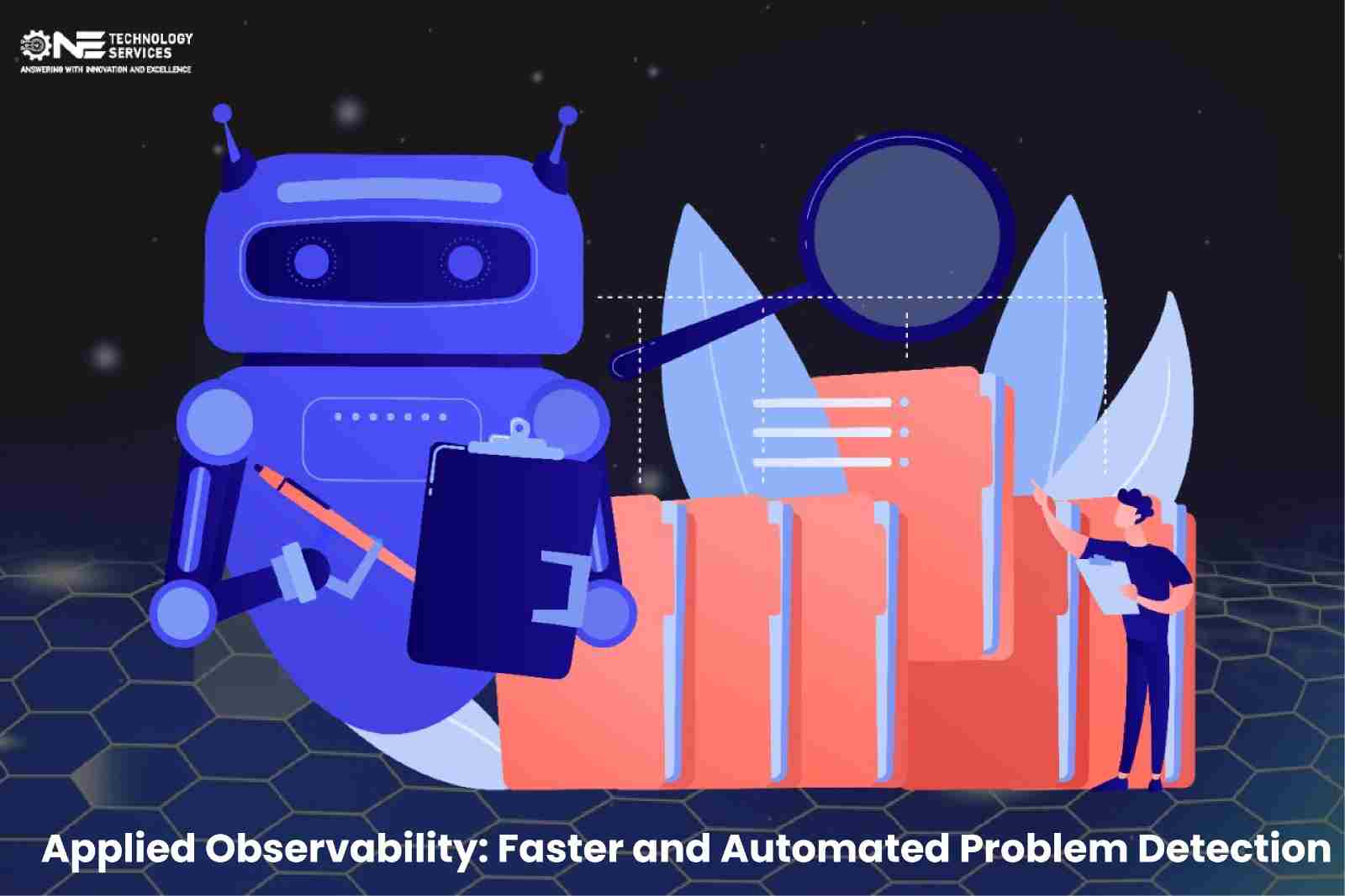In today’s digital-first world, businesses run on complex systems, applications, and distributed infrastructures. As the pressure to deliver consistent, high-performing user experiences increases, the margin for error shrinks dramatically. Downtime, performance lag, and hidden bottlenecks aren’t just annoyances—they’re profit killers.
This is where applied observability comes in.
In this blog, we’ll explore how businesses can leverage applied observability to detect and resolve issues faster, automate their response strategies, and ensure smoother operations. More importantly, we’ll share how One Technology Services helps organizations put these insights into action.
What is Applied Observability?
Observability is not just monitoring. It’s a proactive approach to understanding the internal state of a system by analyzing its output—logs, metrics, traces, events, and more.
Applied observability goes a step further: it’s the practice of leveraging that data insightfully and immediately, often with automation, to make smarter operational decisions and drive continuous improvement.
Key Pillars:
- Comprehensive Data Collection across systems and user interactions.
- Correlation & Contextualization of events in real-time.
- Predictive Analytics and anomaly detection.
- Automated Root Cause Analysis (RCA).
- Adaptive Response Mechanisms based on live metrics.
Why It Matters Now More Than Ever
With the rise of microservices, APIs, hybrid clouds, and remote work infrastructures, traditional monitoring tools fall short. You need real-time observability that’s intelligent and integrated.
The ROI of Applied Observability:
- Up to 75% faster incident resolution (Gartner)
- 30-40% fewer false alarms
- Reduced MTTR (Mean Time to Recovery)
- Proactive service improvement and user experience optimization
Real-World Use Cases
- E-Commerce Downtime Prevention
- Applied observability can detect unusual API latencies and automatically reroute traffic before checkouts are impacted.
- Finance & Compliance Monitoring
- Observe transaction anomalies across services and ensure data integrity with real-time alerts and automated escalations.
- Healthcare Systems
- Continuously monitor EMRs, integrations, and remote devices. Catch issues before they reach clinicians or patients.
- Logistics & Supply Chain
- Monitor IoT, edge devices, and route algorithms. Prevent shipment delays with early failure detection.
How One Technology Services Empowers Applied Observability
At One Technology Services, we don’t just integrate observability tools—we build end-to-end strategies that align with your infrastructure and goals.
Our Expertise Includes:
- Custom dashboards with real-time insights across cloud-native and hybrid environments.
- Integration of tools like Prometheus, Grafana, ELK Stack, Dynatrace, and Datadog.
- Automation frameworks to respond to threshold breaches or anomaly detection.
- Alert fatigue reduction through intelligent alert correlation.
Step-by-Step: Building Your Applied Observability Model
1. Inventory Your Systems
- What systems generate logs, metrics, traces?
- Which ones are mission-critical?
2. Establish KPIs and SLAs
- Define what “normal” looks like.
- Identify thresholds for alerts and auto-responses.
3. Toolchain Integration
- Plug into your current DevOps pipeline and SRE workflows.
4. Automate Detection + Response
- Set triggers for self-healing scripts, alerting, or ticketing.
5. Continuous Learning Loop
- Use post-mortems to improve anomaly models.
- Feed historical data back into machine learning pipelines.
Common Pitfalls & How We Help Avoid Them
- Too Much Noise: We design alert systems that only flag truly critical issues.
- Lack of Context: Our integrations tie every alert to the relevant logs, metrics, and past events.
- Slow Adoption: We work closely with teams to train, deploy, and scale observability practices.
Final Thoughts
Observability isn’t optional anymore. It’s foundational.
But applied observability—when executed with intent, automation, and the right tools—does more than monitor systems. It transforms how teams work, detect problems, and prevent revenue-impacting issues.
With One Technology Services, your organization can shift from reactive firefighting to proactive problem-solving.
Need help implementing Applied Observability across your tech stack?
Reach out at info@onetechnologyservices.com
Or call us at +1 (469) 359 7555
Let One Technology Services help you transform your operations from reactive to resilient.
